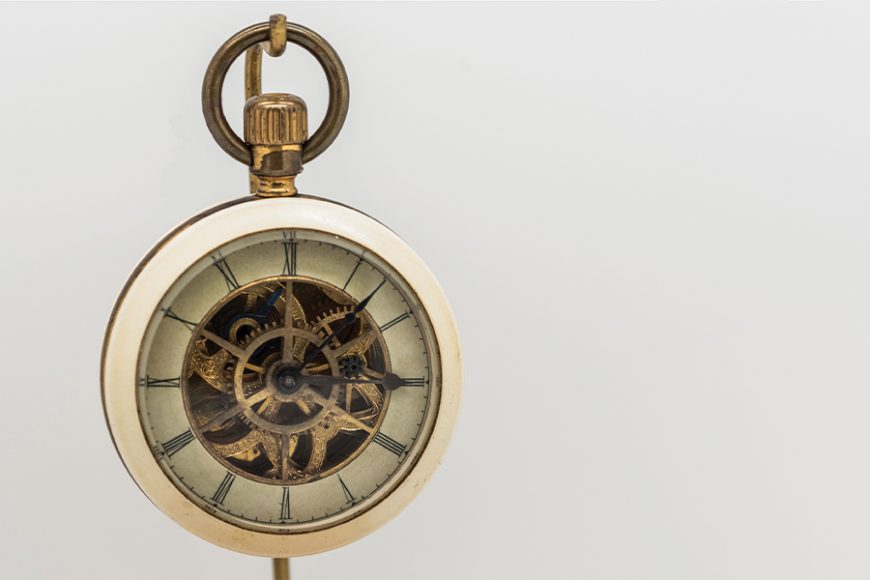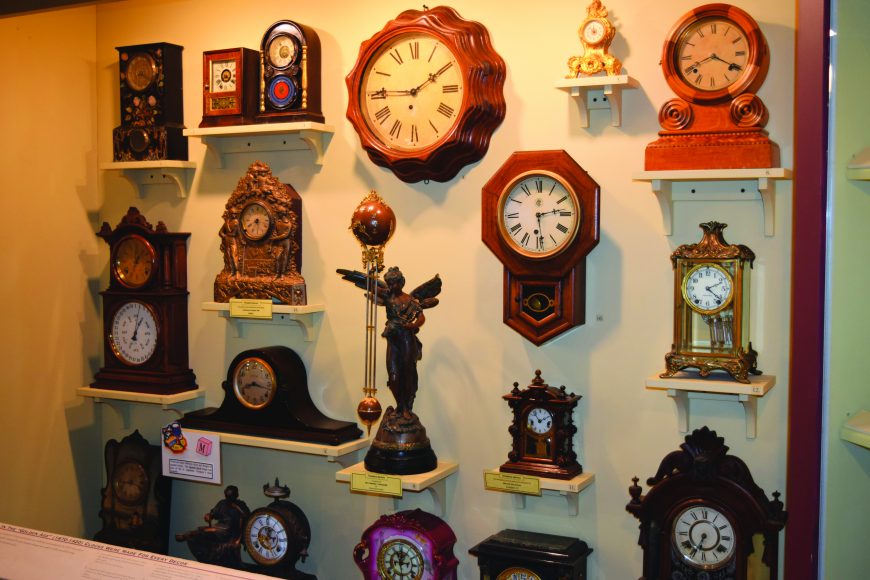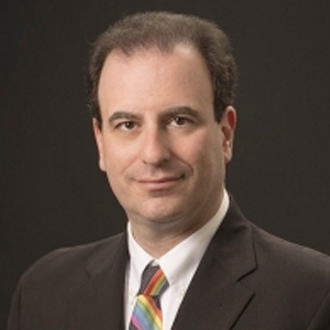“Time,” grumbles Peter Lorre in the Truman Capote-scripted 1954 film classic “Beat the Devil.” “Time: What is time? Swiss manufacture it. French hoard it. Italians squander it. Americans say it is money. Hindus say it does not exist. Do you know what I say? I say time is a crook.”
But time could also be a work of art, a symbol of an era or a mirror of society — provided it is framed within innovative clocks and watches. Central Connecticut was once home to a large swath of the nation’s clock and watch manufacturing industry, and that heritage keeps on ticking at the American Clock & Watch Museum in Bristol.
“This area was the center of clock manufacturing and watch manufacturing,” says Patti Philippon, the museum’s executive director. “Part of it was the natural resources here — water power for transportation, forests for the wood casings, a lot of unskilled labor and clockmakers coming from Europe and immigrating here.”
But when the nation entered World War II, the local manufacturers switched from turning out clocks and timepieces to making fuses and timers for the military. “Not all of the manufacturers went back into production, and by the ’50s and ’60s the industry was in a precarious decline,” Philippon adds.
Around the time the local industry was starting to wane, Edward Ingraham, president of the clock manufacturer E. Ingraham & Co., created plans to build a clock museum. The 1801 home of Miles Lewis, a Bristol tavern owner, was bought and renovated for the museum.
“They liked the idea of showcasing the clocks in a home-based setting, because many of them are things you have in your house,” Philippon notes.
Opening in April 1954 as the Bristol Clock Museum with approximately 300 clocks on display and a small library containing 50 books, the museum grew faster than expected and a new wing was added to the building in 1956. The venue was renamed the American Clock & Watch Museum in 1958 and by 1987 a second wing was added to accommodate its collection. Today, the museum houses 6,000 timepieces, though only 1,500 are currently displayed across its eight galleries and 10,000 square feet of exhibit space.
Despite the presence of “American” in its name, the museum has several international pieces, including its oldest item — an English lantern clock from 1690. The oldest American work on display is a 1735 clock made by Henry Harmson of Marblehead, Massachusetts, in a walnut veneer case. This clock’s brass movement requires rewinding every eight days.
Among the most popular items on display are a Joseph Ives mirror clock from 1820 that features a painting of the building that now houses the museum and an original first-run 1932 Mickey Mouse wristwatch. A special exhibit at the museum details the marketing of timepieces from the Civil War era through today’s Instagram influencers. Philippon points out how Depression-era advertising for timepieces emphasized cost-efficiency and product reliability while 1970s-era promotions tapped into the feminist movement to emphasize time was on the side of working women.
But when quizzed on the museum’s most valuable artifacts, Philippon acknowledges that “it’s hard to say because there are different reasons to have value on pieces.” However, she adds that visitors to the museum have a strong emotional tie to the works on display.
“So many times, we have visitors come in and say, ‘I remember my grandmother had that in her mantelpiece,’” she says. “There is always something that strikes a chord.”
Many of the clocks on exhibit are still functional and give off resounding chimes, gongs, beeps and cuckoo chirps. As a result, the time displays are staggered to avoid a deafening noise if each clock went off on the same second. And the pieces made in the days before batteries still require manual labor to stay ticking.
“A group of gentlemen come into the museum to wind the timepieces,” Philippon says. “They call themselves the Old Cranks.”
The museum attracts approximately 4,300 visitors per year, and arguably the most unique visitor this year was the Brooklyn hip-hop artist KV, who shot part of the music video for his song “Time” amid the displays. There is a map in the lobby with pins stuck into it by museum visitors who point out their places of origin.
“We’ve had people from every continent except Antarctica,” Philippon says. “And this year, we had our first gentleman who lived on a boat, so he put his pin in the Atlantic.”
Of course, in today’s digital world many people have forsaken wristwatches and clocks to rely on the cell phones for the time. But Philippon is not concerned that timepieces will one day be found only within the confines of a museum.
“It is the next phase,” she explains. “Everything goes in cycles. We’re seeing people who have an interest in wristwatches and vintage pieces. On some of the digital watches, you can have a face that looks like an old analog clock. In 10 years from now, it’s going to be different again.”
The American Clock & Watch Museum is at 100 Maple St. in Bristol. For more, call 860-583-6070 or visit clockandwatchmuseum.org.






